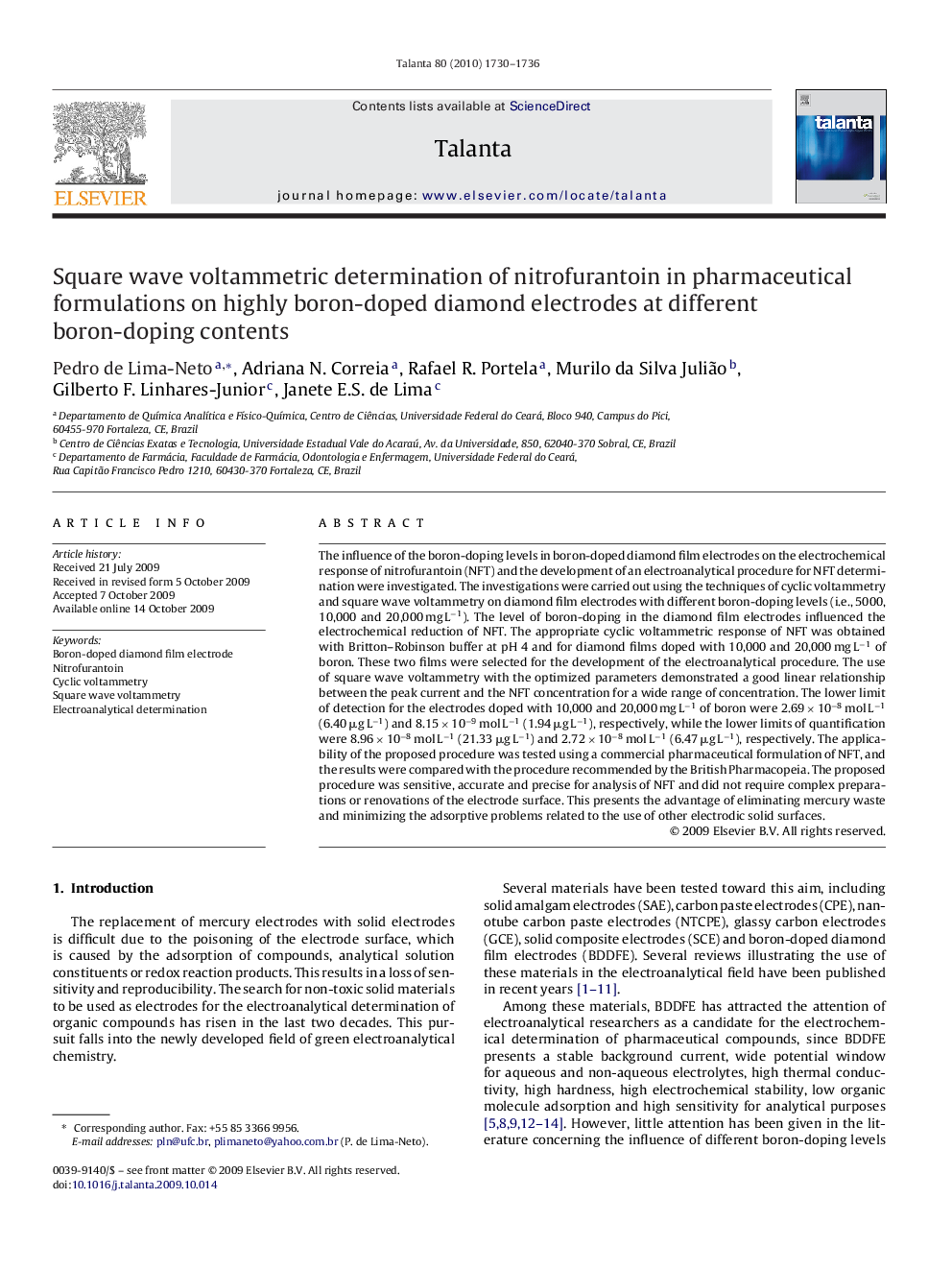| Article ID | Journal | Published Year | Pages | File Type |
|---|---|---|---|---|
| 1242974 | Talanta | 2010 | 7 Pages |
The influence of the boron-doping levels in boron-doped diamond film electrodes on the electrochemical response of nitrofurantoin (NFT) and the development of an electroanalytical procedure for NFT determination were investigated. The investigations were carried out using the techniques of cyclic voltammetry and square wave voltammetry on diamond film electrodes with different boron-doping levels (i.e., 5000, 10,000 and 20,000 mg L−1). The level of boron-doping in the diamond film electrodes influenced the electrochemical reduction of NFT. The appropriate cyclic voltammetric response of NFT was obtained with Britton–Robinson buffer at pH 4 and for diamond films doped with 10,000 and 20,000 mg L−1 of boron. These two films were selected for the development of the electroanalytical procedure. The use of square wave voltammetry with the optimized parameters demonstrated a good linear relationship between the peak current and the NFT concentration for a wide range of concentration. The lower limit of detection for the electrodes doped with 10,000 and 20,000 mg L−1 of boron were 2.69 × 10−8 mol L−1 (6.40 μg L−1) and 8.15 × 10−9 mol L−1 (1.94 μg L−1), respectively, while the lower limits of quantification were 8.96 × 10−8 mol L−1 (21.33 μg L−1) and 2.72 × 10−8 mol L−1 (6.47 μg L−1), respectively. The applicability of the proposed procedure was tested using a commercial pharmaceutical formulation of NFT, and the results were compared with the procedure recommended by the British Pharmacopeia. The proposed procedure was sensitive, accurate and precise for analysis of NFT and did not require complex preparations or renovations of the electrode surface. This presents the advantage of eliminating mercury waste and minimizing the adsorptive problems related to the use of other electrodic solid surfaces.
